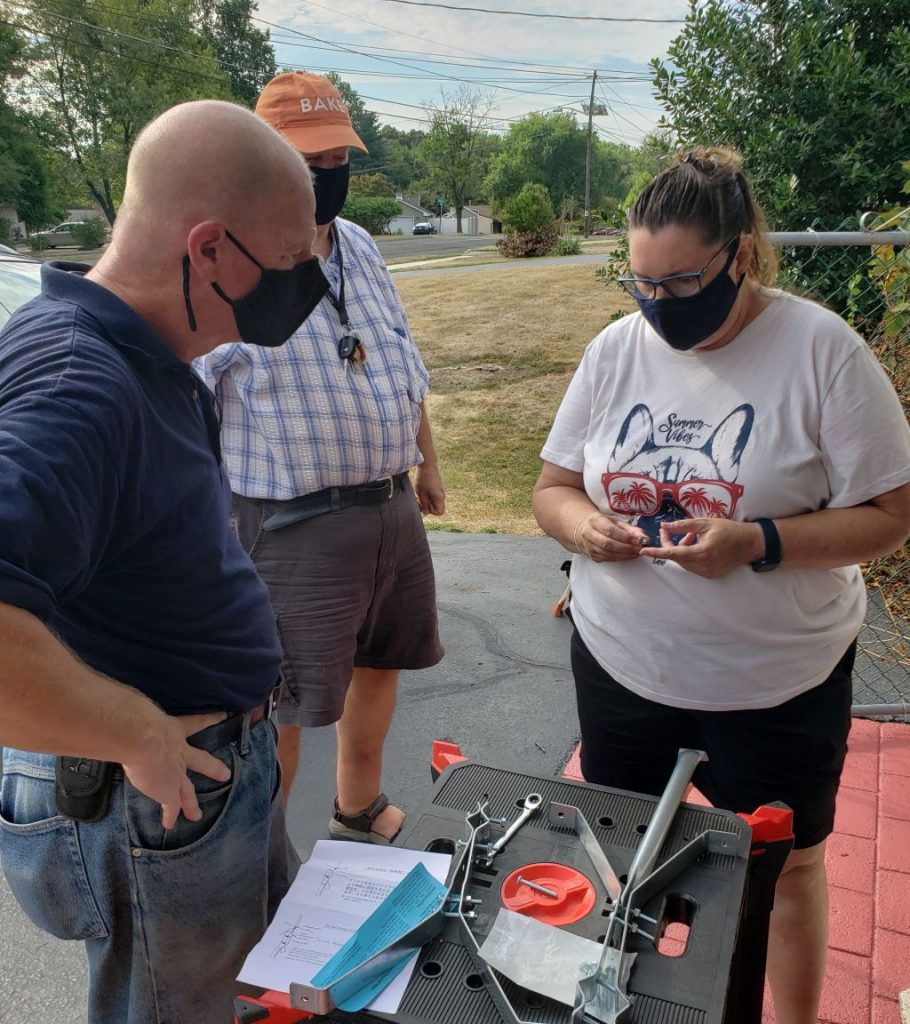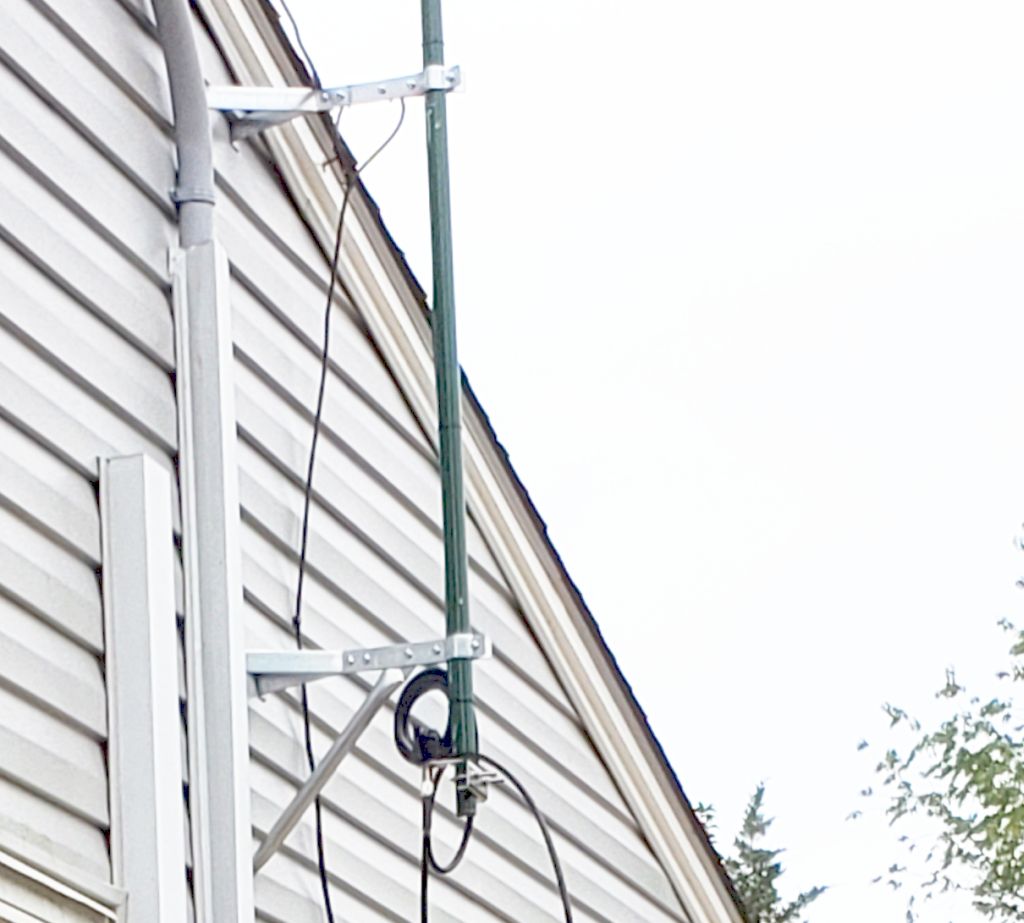
On the weekend of August 20-21, 2022, several members of the DSRC: Pat K2PAT, Don AK2S, Charlie N2CTW, and John KD2AAR, helped newbies Laura K2WWF, and Cushla KD2TCH get on the air with an Antenna Raising Party!

(Note the actual presence of “Instructions” in photo)
With lots of background knowledge given by Pat K2PAT and John KD2AAR, both Cushla and Laura were able to gain a more in-depth understanding of antennas as well as VHF and UHF operations.

Under the project management of John, Pat helped both Cushla and Laura assemble their antennas and aid in the installation with step by step explanations along the way. Don assisted with programming the radios and Charlie provided invaluable antenna raising assistance as well!

to seal the hole.
The coax was attached to the mast allowing loops for a choke and also a drip line portion at the bottom of the pole so rain/ice can slide off the bottom of the cable instead of directly across the connector assembly.

To prepare the coax cable’s connectors, John stripped the end of the wire. The two lengths of coaxial cable were different. Cushla’s wire had strands of copper core that slipped into the connector base when the copper braiding was peeled back. Then it was crimped in place and covered by a ferrule ring. Laura’s wire was a stiffer solid copper core connected on the antenna side with a welded connector.
Each antenna was connected to the ground wire which was strung through a small diameter PVC pipe and attached to the side of the house ending near the new ground rod. That copper wire was connected to the ground.

The next step was test, test, test we could reach the repeater and clearly be heard by others.
Once we were sure each antenna was connecting properly to the repeater, we could finalize the installation by protecting the vital connections from the elements.

They have already signed up for their first service project -the MS City to Shore bike race as amateur radio operators!

to seal the hole.
With Cushla’s Diamond X30A antenna and Laura’s J-pole installed, they now are making solo contacts through local (and not so local) repeaters and are both SUPER excited to fully participate in the amateur radio hobby.
A Personal Note:
A HUGE THANK YOU to everyone, especially Pat and John who spent many hours “mentoring” us newbies, Charlie for helping get the radio programmed with CHIRP, Don for his leadership and always inspiring us to not give up, as well as the rest of the DSRC for your guidance, patience, and encouragement as we slowly learn about the art of amateur radio.
73,
Cushla KD2TCH
Laura K2WWF

Parts Lists:
- Diamond X30A (Cushla)
- ARROW ANTENNA OSJ-146/440 Dual Band 2 Meter / 440 MHz J-Pole Vertical Antenna (Laura)
- Steel chain link fence top rail to use as a mast
- Nello Medium Duty Wall Mount Kits
- DXE-CGB-150 Coax Grounding Bracket with V-Clamp,
- ALF-AT3G50UBXL Surge Protector, Coaxial, DC Pass, UHF Female
- ALF-3G50 Arc-Plug, 200 W Replacement (Hams are always prepared with a spare!)
- plus: Coax cable (RG-8 type),
- UHF connectors (crimp),
- protective taffy,
- protective sleeve,
- grounding wire, and a copper ground rod vibrated into the soil
- and ferule rings

